#richard neville 16th earl of warwick
Text
When we think about the Wars of the Roses, it is easy to seal them off, as if the in the infighting of an extended English aristocratic family had nothing to do with the outside world. It has begun to be accepted that the conflicts did move and involve popular opinion. The wars may have been ‘just’ a clash of dynasties or aristocratic power games, but without people willing to fight in those causes, they could not have happened. The European dimension to the wars, however, is still too easily marginalized. And yet the end of the Hundred Years War provided the backdrop to the first blows of the conflict, Burgundy and France provided refuge from it, and crucially, neither Warwick’s campaign for the Readeption nor Edward [IV]’s attempt to snatch back the crown could have been launched without continental help, from France and Burgundy respectively. Add to that the influence of Hanseatic shipping, the importance of the two Margarets, of Anjou and of Burgundy, to Lancastrians and Yorkists respectively, and the sporadic involvement of the Scots, and it becomes clear that the Wars of the Roses were an extended episode in a European conflict, not just a murderous private dispute.
— David Horspool, Richard III: A Ruler and His Reputation
#pollard has also pointed this out#wars of the roses#late medieval#edward iv#margaret of anjou#richard neville 16th earl of warwick#margaret of york
41 notes
·
View notes
Text
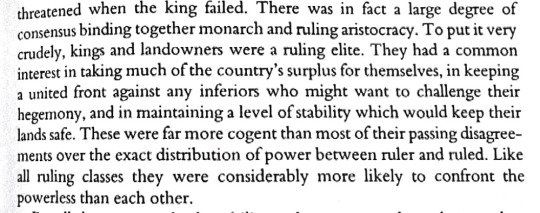
- Christine Carpenter, The Wars of the Roses: Politics and the constitution in England, c.1437-1509
#that was until#george of clarence#and#richard neville earl of warwick#came along#AKA#carlo ziglio#lord warwicj#we are so used to reading about factionalism#that we forget quite how subversive treason and regionalism was#christine carpenter#george duke of Clarence#richard neville 16th earl of warwick#lord warwick
5 notes
·
View notes
Text
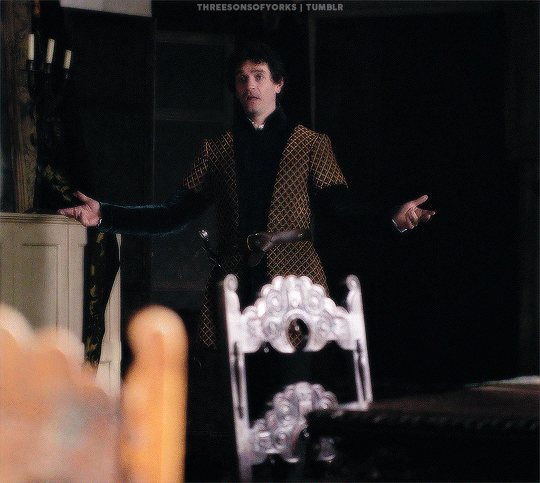


JAMES FRAIN as RICHARD NEVILLE, 16th EARL OF WARWICK
in THE WHITE QUEEN (2013) | 1x02
#this could easily be TC announcing Elizabeth's birth to HVIII#GUESS WHAT YOUR MAJESTY... IT'S A GIRL#james frain#richard neville#jamesfrainedit#richardnevilledit#the white queen#period drama#periodramaedit#weloveperioddrama#onlyperioddramas#mine#twqedit#15th century#house of york#byfefa
78 notes
·
View notes
Text










THE WHITE QUEEN 10-YEAR ANNIVERSARY WEEK
Day Two - Favourite Villain: Richard Neville, 16th Earl of Warwick
#the white queen#twq#twqedit#perioddramaedit#perioddramasource#weloveperioddrama#perioddramagif#twq10#filmtvcentral#smallscreensource#cinematv#showedit#tvedit#james frain#earl of warwick#richard neville#my edit
131 notes
·
View notes
Photo
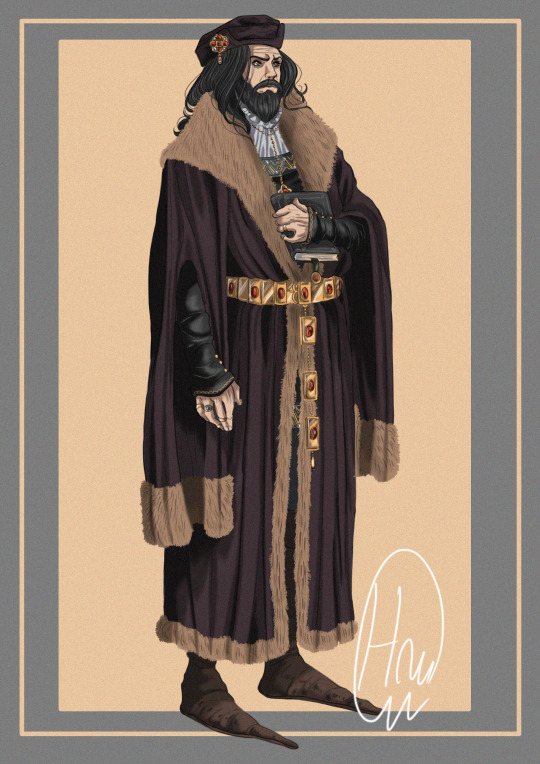

Richard Neville, 16th Earl of Warwick
&
Jacquetta of Luxembourg
#the wars of the roses#15th century#medieval#middle ages#british history#medieval fashion#historical#character design#digital art#artists on tumblr#my art#edward iv#elizabeth woodville#elizabeth of york#jacquetta of luxembourg#richard neville#isabel neville#henry vi#richard iii#the white queen#the white princess#plantagenets#royals
165 notes
·
View notes
Text
Richard Neville, 16th Earl of Warwick: Aww, you named your new son after me.
Cecily Neville, Duchess of York: He is named for his father. Get over yourself, nephew.
Louis, Earl Mountbatten of Burma: Aww, you named your new son after me.
Prince William, Duke of Cambridge: He is named after Louis XI. Get over yourself, uncle.
Louis: ...
William: Only joking; he's named for you. Think I'd name my son for the frog king who killed La Esmeralda?
2 notes
·
View notes
Text
Betrayal in the Wars of the Roses, Volume 1
By Dan Moorhouse
Reviewed July 21, 2023 by Kathy.
Disclaimer! I read many of the chapters in this book while it was still a work in progress.
Betrayal, especially in the history books, is often portrayed in basic terms of black or white, good or bad, right or wrong. Those who betray during times of civil strife, such as the Wars of the Roses, often suffer from this kind of two-dimensional thinking. However, the reality is much more complex and nuanced.
Betrayal in the Wars of the Roses, the first volume of a planned three part series, takes a deeper look at some of the better known betrayals in the Wars of the Roses, examining kinship, patronage, and loyalty, helping to put things into context and showing that good lordship was a two way street, with each side having obligations to the other, and if those obligations were not properly filled…well, then, that’s when things could get sticky.
After an introduction that sets the table, we are provided with chapters on the following “betrayers” – George, Duke of Clarence; Richard Neville, 16th Earl of Warwick; Henry Beaufort, 3rd Duke of Somerset; Henry Percy, 4th Earl of Northumberland; Richard Woodville, 1st Earl Rivers; Thomas Stanley, 1st Earl of Derby; and Sir Anthony Trollope. Not only are people looked at in this book of betrayals, the role of towns is also studied with a chapter dedicated each to Calais and York.
While a case can be made for each of the above men being guilty of betrayal, in just about every instance there were mitigating circumstances. And in several cases, it was the king (usually Edward IV) who handled situations in what seemed to me a clumsy manner, leaving me thinking, “It’s no wonder he rebelled!” I won’t go into detailing the information presented for each of the men above, but as an example will present the case of George of Clarence. And no, I’m not going to touch the case of umpteen times great-grandfather Thomas Stanley with the proverbial 10 foot pole.
Now George is often described as a petulant, ungrateful younger brother, never satisfied with what he had and always wanting more. Now, maybe that is true, at least in part, but it’s not the whole story. As a young man, George had seen his sister Margaret make a high-status marriage, while his own wishes for an equally prominent marriage were nixed by, who else, his brother the king. He was granted significant wealth but his proposed expenses that included lavish improvements to Tutbury Castle outreached his income. I think today we’d say that George liked living beyond his means. He was appointed Lieutenant of Ireland, an office his father once held, but later had his right to govern as his father had curtailed. There were other issues, but these will do for this example and will show that while some of George’s problems were of his own making, not all of them were, and if these matters had been handled differently by Edward, it is possible that some of the tragedies in George’s life might have been avoided.
In the end, the question of betrayal has to be looked at through the lens of family relationships, which were extremely important in medieval England, who one owed the most loyalty to (kin or king?), and whether the principles of good lordship were observed by all parties. And when it came to loyalty to the Crown, what exactly are we referring to – the institution of kingship, or the individual sitting on the throne?
This book is filled with enough details and quotes from original documents to satisfy the geekiest of history geeks, yet remains readable and entertaining, and it even got me to question some previously held beliefs. So while I may never completely forgive my great-great (etc) grandfather for betraying Richard III, I at least have a better understanding of why he made the choices he did.
https://mybook.to/Betrayal-paperback
https://mybook.to/Betrayal-paperback
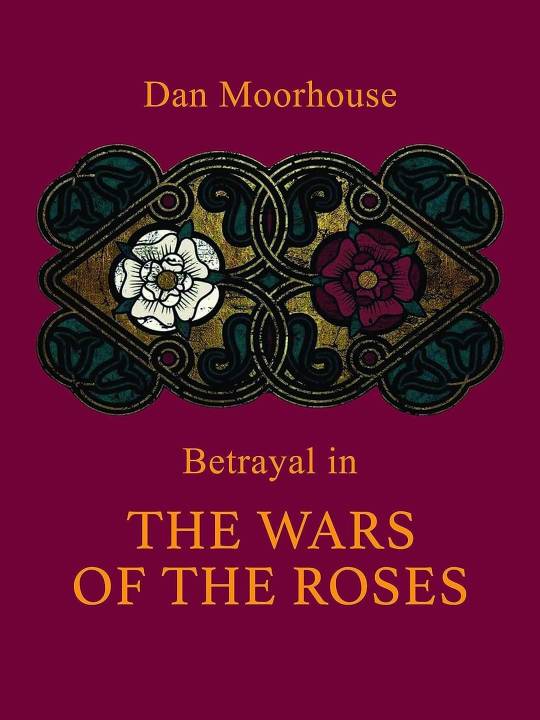
2 notes
·
View notes
Text

Born on November 22, 1428, Richard Neville, 16th Earl of Warwick, 6th Earl of Salisbury, KG (known as 'Warwick the Kingmaker'), the wealthiest and most powerful English peer of his age, initially entered the Wars of the Roses on the side of the Lancastrian, Henry VI, changed allegiance to the Yorkist, Edward IV, then reverted to the Lancastrian cause; imprisoning Edward in Warwick Castle during the summer of 1469, and attempting to rule in King Edward’s name; though protests by the King’s supporters forced him to release Edward.
Warwick having been killed in the Battle of Barnet on April 14, 1471, the Castle (originally built in 1068 by William the Conqueror), passed to Warwick’s son-in-law, George Plantagenet, 1st Duke of Clarence (brother of King Edward IV; George being later executed for treason by being drowned in a barrel of Malmsey wine).
Warwick’s younger daughter, Anne, had a short-lived marriage to King Henry VI’s son, Edward of Westminster, who died in battle at the age of 17. She then married King Edward IV’s younger brother, Richard, Duke of Gloucester, who later became King Richard III.
4 notes
·
View notes
Text
Doing small reading on the Wars of the Roses, I do get the desire to use it as a source, but it misses a point that... a lot of the people who ended up shifting loyalties too much ended up being killed for it.
The Kingmaker, Richard Nevill, the 16th Earl of Warwick, was famous for defecting to join whoever he thought strongest. He supported the Lancastrian cause first, then he switched to the Yorkist cause, then back to the Lancastrian cause. He was killed the Battle of Barnet, 1471.
2 notes
·
View notes
Text
Anne Beauchamp, 16th Countess of Warwick & 6th Countess of Salisbury




Daughter of Richard Beauchamp, 13th Earl of Warwick & Isabel le Despenser, Countess of Worcester & Warwick
Wife of Richard Neville, 16th Earl of Warwick
Mother of Isabel Neville, Duchess of Clarence & Anne Neville, Queen of England
Fun Fact: Anne Beauchamp was the Countess of Warwick in her own right
10 notes
·
View notes
Note
There's so much emphasis on the extent of Tudor Propoganda while studying history (fair enough), but i rarely see any talk about Richard III's propoganda against his predecessors, the the Woodvilles and Edward IV (including exaggerations, slander, fabrications witchcraft accusations etc) and his eventual successor Henry VII, which has negatively impacted their reputations to the same extent.
Hi! Sorry for taking so long to reply, but yeah the term 'Tudor propaganda' is flung around as if only Henry VII (and his successors) engaged in the practice and everyone who came before them didn't even know that manipulation of the public opinion was a thing that could be attempted. Granted, we need to establish that despite people claiming Henry VII was a sort of proto-Joseph Goebbels, neither he nor his predecessors had extraordinary powers: as Wesley Corrêa says, 'we cannot expect a conscious and widespread propaganda policy in this period, either as manipulation or as thought-control, because we cannot expect a well-centralised government'. Yet the Wars of the Roses period in specific saw a rising awareness of the importance of dialogue with the commons — the very idea of the Wars of the Roses itself is rooted in Yorkist, not Tudor, propaganda.
Richard Duke of York, Warwick and Edward IV engaged in propaganda against Henry VI. This included attacks against Margaret of Anjou, positioning her as a threat to true Englishness and the masculine order of the realm. This included painting her in terms of sexual misconduct and declaring Henry VI's heir, Edward of Lancaster, a bastard. This included presenting Edward IV as the promised Arthurian hero. This included painting Henry VI as a fool of small intelligence. To this day many of these claims remain in the public imagination, especially the ones related to Margaret of Anjou's inadequacy as queen, her supposed unfaithfulness and Edward of Lancaster's illegitimacy. To this day I find nonfiction books referring to Henry VI as 'an imbecile'.
These propaganda efforts were of course a double-edged sword. When Warwick revolted against Edward IV he used some of the same tactics they had used in Edward's favour: namely, declaring a claimant to the crown a bastard (this time Edward IV himself) and declaring the decay of the realm's commonweal thanks to the influence of evil councillors, this time no longer Somerset and other favourites of Henry VI and Margaret of Anjou, but the Woodvilles, the Herberts, and others of Edward IV's new men. This was an active act of propaganda—no English chronicle before Warwick's revolt had registered any claims against the queen's family—yet to this day, we hear all about the supposed nefarious influence of Elizabeth Woodville and her kin and how everyone supposedly hated them.
Richard III in turn appropriated much of Warwick's propagandistic legacy against the Woodvilles, and even the bastardy accusations were resurrected under a new guise, this time against Edward IV's children. Not only did he disparage his nephews and nieces, he 'launched a frontal assault on the very morality and integrity of [Edward IV]'s regime'. Richard III's views on Edward IV and his accusations against Hastings and Dorset (Elizabeth Woodville's firstborn) in face of his own self-proclaimed morality still colour a lot of our understanding of those figures. As he accused others of debauchery and witchcraft, Richard III 'deliberately cultivated an image of the virtuous prince'. Ricardians take all his noble deeds whilst king as genuine piety and pure kind-heartedness, never as an act of self-fashioning as rooted in genuine feelings as it might have been.
Richard III also appropriated the xenophobic fearmongering levelled against Margaret of Anjou, this time using it against Henry Tudor. Henry VII's perceived 'Frenchness' or 'un-Englishness' also has its origins on Richard III's propaganda. Likewise, in the same way that Richard III's administration felt the need to refer to Edward V as 'Edward the Bastard' every chance it got, Richard III made an effort in declaring Henry Tudor had 'no manner [of] interest, right or colour, as every man well knoweth' merely months before Tudor invaded because evidently, people were of the contrary opinion. Richard III took some lengths to declare Henry Tudor was corrupted by his bastard blood (going so far as to declare Owen Tudor a bastard), yet to this day all we hear about is how Henry Tudor had no claim to the throne, as though the Englishmen that went over to Brittany to join his cause couldn't rally around anyone else with an actual claim since according to them Henry had none. Everyone had a better claim than Henry Tudor yet no one else was more qualified to marry Elizabeth of York.
None of this is to be taken as an attack against Richard III, Warwick, Edward IV, etc. Henry VII himself did of course engage in propaganda not only against his predecessor but also—and I would say especially—in the affirmation of a self-mythology that placed him as the long-awaited Son of Prophecy and the healer of old divisions. Legitimacy was a quality that could be given, made, or taken away, so it needed to be constantly built and rebuilt. As Rodney Barker says: 'what characterises government, in other words, is not the possession of a quality defined as legitimacy, but the claiming, the activity of legitimation.'
The period of the Wars of the Roses was characterised by a remarkable easiness in toppling regimes—all of the figures I cited here were in need of establishing and maintaining legitimacy. It's naive to think no one ever engaged in propaganda before the Tudors or to think that Tudor propaganda against Richard III is the only type of propaganda that ever came down to us. In short, anon, I agree 🌹x
27 notes
·
View notes
Text

Image of Cecily Neville in the Neville Book of Hours (c. 1445).
Somehow this lady has escaped my history detection radar until now, which is surprising because she was the mother of Edward IV and Richard III, and wife of Richard (Plantagenet), Duke of York.
Some ten years [CHECK] before he became king, Cecily's youngest son, Richard, married Anne Neville, daughter of Richard Neville, 16th Earl of Warwick, one of the leading peers and military commanders of his generation. Neville was also Cecily's nephew, which meant Anne was her great-niece as well as her future daughter-in-law.
It is important to note that prior to her marriage to Richard, Anne was wed briefly to Edward of Westminster aka Edward of Lancaster, the only son of Henry VI of England and Margaret of Anjou. He was killed aged seventeen at the Battle of Tewkesbury. Used simply as a pawn in the business of arranged marriages and political alliances, Anne was passed from one house (Yorkist) to the another (Lancastrian). Anne's life was cut short at the age of 28, when she died, probably [CHECK] of tuberculosis. Meanwhile, Cecily outlived her and all her sons, and survived to the age of 80.
Slowly but surely in my studies, I am unravelling the story of the Wars of the Roses. As usual, I'm far more interested in what the women's lives were like, rather than those of the men!
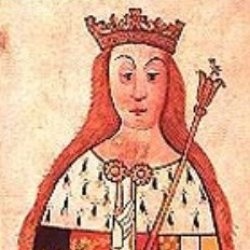
Anne Neville ADD DETAILS
ADDITIONAL NOTES:
Cecily's sons:
Edward IV (died age 40, cause of death widely speculated but unknown);
Edmund, Earl of Rutland (died age 17 circa Battle of Wakefield);
George Plantagenet, Duke of Clarence (executed age 28 upon the order of the king, his brother Edward);
Richard III (died age 32 at the Battle of Bosworth Field).
0 notes
Text
Events 7.10 (before 1900)
138 – Emperor Hadrian of Rome dies of heart failure at his residence on the bay of Naples, Baiae; he is buried at Rome in the Tomb of Hadrian beside his late wife, Vibia Sabina.
645 – Isshi Incident: Prince Naka-no-Ōe and Fujiwara no Kamatari assassinate Soga no Iruka during a coup d'état at the imperial palace.
988 – The Norse King Glúniairn recognises Máel Sechnaill mac Domnaill, High King of Ireland, and agrees to pay taxes and accept Brehon Law; the event is considered to be the founding of the city of Dublin.
1086 – King Canute IV of Denmark is killed by rebellious peasants.
1212 – The most severe of several early fires of London burns most of the city to the ground.
1460 – Richard Neville, 16th Earl of Warwick, defeats the king's Lancastrian forces and takes King Henry VI prisoner in the Battle of Northampton.
1499 – The Portuguese explorer Nicolau Coelho returns to Lisbon after discovering the sea route to India as a companion of Vasco da Gama.
1512 – The Spanish conquest of Iberian Navarre commences with the capture of Goizueta.
1519 – Zhu Chenhao declares the Ming dynasty's Zhengde Emperor a usurper, beginning the Prince of Ning rebellion, and leads his army north in an attempt to capture Nanjing.
1553 – Lady Jane Grey takes the throne of England.
1584 – William I of Orange is assassinated in his home in Delft, Holland, by Balthasar Gérard.
1645 – English Civil War: The Battle of Langport takes place.
1778 – American Revolution: Louis XVI of France declares war on the Kingdom of Great Britain.
1789 – Alexander Mackenzie reaches the Mackenzie River delta.
1806 – The Vellore Mutiny is the first instance of a mutiny by Indian sepoys against the British East India Company.
1832 – U.S. President Andrew Jackson vetoes a bill that would re-charter the Second Bank of the United States.
1850 – U.S. President Millard Fillmore is sworn in, a day after becoming president upon Zachary Taylor's death.
1877 – The then-villa of Mayagüez, Puerto Rico, formally receives its city charter from the Royal Crown of Spain.
1882 – War of the Pacific: Chile suffers its last military defeat in the Battle of La Concepción when a garrison of 77 men is annihilated by a 1,300-strong Peruvian force, many of them armed with spears.
1883 – War of the Pacific: Chileans led by Alejandro Gorostiaga defeat Andrés Avelino Cáceres's Peruvian army at the Battle of Huamachuco, hastening the end of the war.
1890 – Wyoming is admitted as the 44th U.S. state.
0 notes
Text
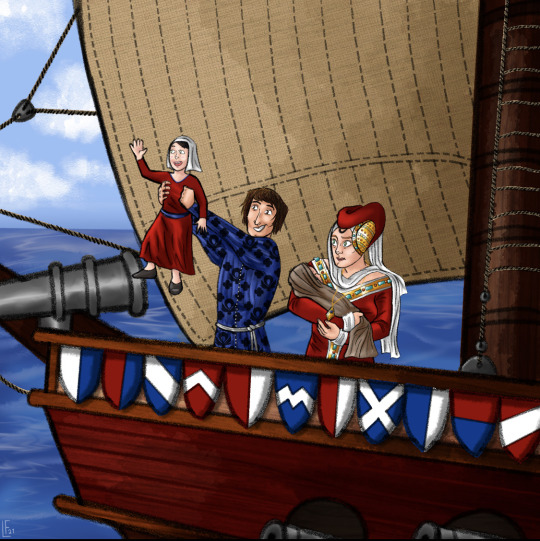
The Neville Clan aboard Warwick's Trinity as depicted by @nebylitsa
I’m pretty sure you must all think I’m mad by this point but this one has been long in the making 🤭 (and I’m also trying to compensate my creative outlet with commissions as I don’t have enough time and energy atm to write fic).
So behold my most recent commission from the mighty @abstractchronicle <3 . He did a splendid job drawing Warwick & co. So as explained in my previous ask, this is the whole gang going to Calais circa 1457 (no Carlo Ziglio this time I’m afraid). From left to right we have: Isabel Neville, The Kingmaker(TM) and Anne Beauchamp holding little Anne Neville.
Your favourite 15th century fannart patron highly recommends that you check out this talented individual’s work and I hope you all feel like gushing over this as much as I am rn T_T.
Peace out 🏴☠️🏴☠️
#WARWICK’s SMILE IS SO CHEESY I LOVE IT#commissionee is very talented#commissionee is accepting requests#also good on you nebylista!!#historical fannart#lady p: patron of the arts#richard neville earl of warwick#richard neville 16th earl of warwick#warwick the kingmaker#and lord warwicj is just that#lord warwick#anne beauchamp countess of warwick#anne beauchamp#isabel neville#anne neville#pirate ships#the wars of the roses#the white queen
49 notes
·
View notes
Text
Soooo classy, Warwick! 😝

'I need to set a good exahm-ple! BUURRRRP!'
#horrible histories#measly middle ages#richard neville#16th earl of warwick#warwick the kingmaker#my edit#a remake actually#simon farnaby
3 notes
·
View notes
Text

Richard of Gloucester (King Richard III) of England
Richard III (2 October 1452 – 22 August 1485) was King of England and Lord of Ireland from 26 June 1483 until his death in 1485. He was the last king of the House of York and the last of the Plantagenet dynasty. His defeat and death at the Battle of Bosworth Field, the last decisive battle of the Wars of the Roses, marked the end of the Middle Ages in England. He is the protagonist of Richard III, one of William Shakespeare's history/tragedy plays.
Richard was created Duke of Gloucester in 1461 after the accession of his brother King Edward IV. In 1472, he married Anne Neville, daughter of Richard Neville, 16th Earl of Warwick. He governed northern England during Edward's reign, and played a role in the invasion of Scotland in 1482. When Edward IV died in April 1483, Richard was named Lord Protector of the realm for Edward's eldest son and successor, the 12-year-old Edward V. Arrangements were made for Edward V's coronation on 22 June 1483. Before the king could be crowned, the marriage of his parents was declared bigamous and therefore invalid. Now officially illegitimate, their children were barred from inheriting the throne. On 25 June, an assembly of lords and commoners endorsed a declaration to this effect, and proclaimed Richard as the rightful king. He was crowned on 6 July 1483. Edward and his younger brother Richard of Shrewsbury, Duke of York, called the "Princes in the Tower", were not seen in public after August, and accusations circulated that they had been murdered on King Richard's orders, under the Tudor rule a few years later.
There were two major rebellions against Richard during his reign. In October 1483, an unsuccessful revolt was led by staunch allies of Edward IV and Richard's former ally, Henry Stafford, 2nd Duke of Buckingham. Then, in August 1485, Henry Tudor and his uncle, Jasper Tudor, landed in southern Wales with a contingent of French troops, and marched through Pembrokeshire, recruiting soldiers. Henry's forces defeated Richard's army near the Leicestershire town of Market Bosworth. Richard was slain, making him the last English king to die in battle. Henry Tudor then ascended the throne as Henry VII.
Richard's corpse was taken to the nearby town of Leicester and buried without ceremony. His original tomb monument is believed to have been removed during the English Reformation, and his remains were wrongly thought to have been thrown into the River Soar. In 2012, an archaeological excavation was commissioned by the Richard III Society on the site previously occupied by Grey Friars Priory. The University of Leicester identified the skeleton found in the excavation as that of Richard III as a result of radiocarbon dating, comparison with contemporary reports of his appearance, and comparison of his mitochondrial DNA with that of two matrilineal descendants of his sister Anne. He was reburied in Leicester Cathedral on 26 March 2015.
The image shown above is a reconstruction from a scan of the actual skull of Richard III recovered from a car park in Leicester in 2012
8 notes
·
View notes